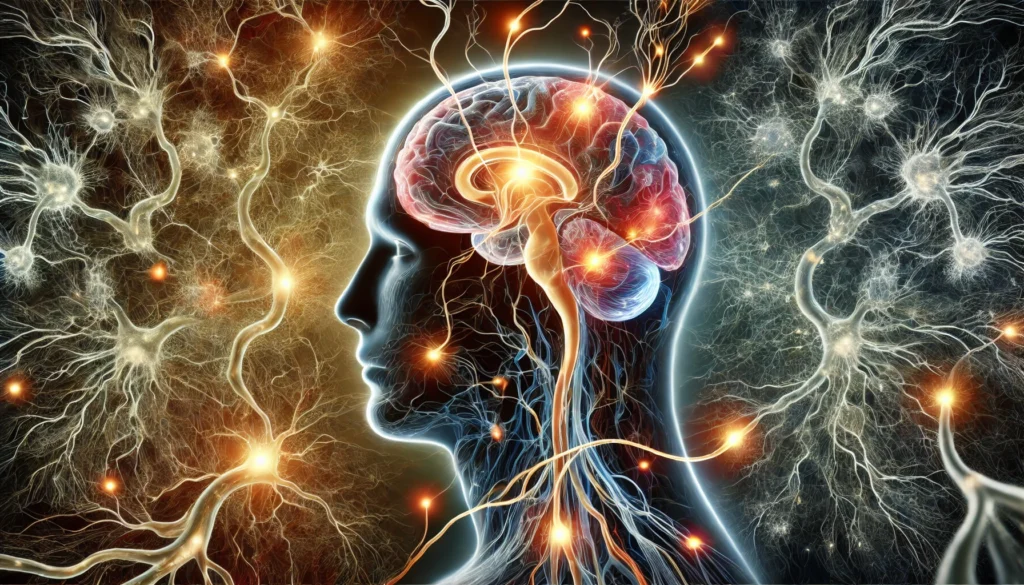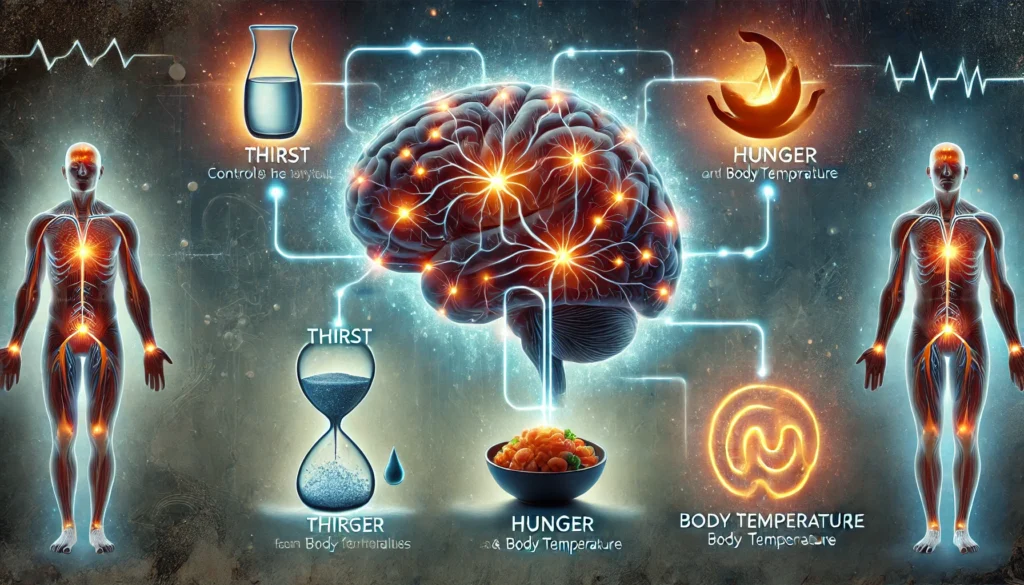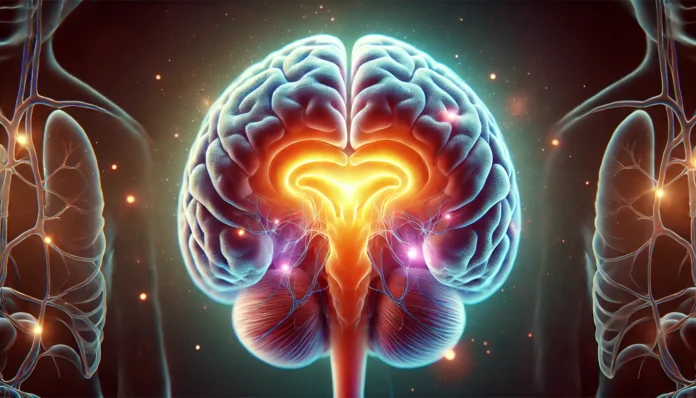The human brain, a marvel of biological engineering, orchestrates an intricate array of physiological and psychological functions that govern our survival, behavior, and quality of life. Among its many roles, few are as foundational as regulating hunger, thirst, and body temperature—functions so vital that they often occur without our conscious awareness. These life-sustaining processes are primarily governed by a remarkably small yet complex region nestled deep within the brain: the hypothalamus. For those invested in the science of anti-aging and cognitive optimization, understanding the hypothalamus offers critical insights into how the brain maintains internal balance and how disruptions in its function can accelerate aging or cognitive decline.
You may also like: Best Brain Foods for Focus, Memory, and Longevity: What Science Says
The Hypothalamus: The Master Regulator of Homeostasis
The hypothalamus, located at the base of the brain near the pituitary gland, is often described as the command center for the autonomic nervous system and endocrine coordination. Despite its modest size—approximately that of an almond—it exerts outsized control over numerous essential physiological processes. It serves as the integration hub for signals from the body and brain, translating sensory data and internal cues into hormonal and neural outputs that maintain homeostasis. From blood pressure and heart rate to sleep-wake cycles and emotional regulation, the hypothalamus is indispensable. However, it is its specific regulation of hunger, thirst, and temperature that positions it at the heart of both survival and long-term health.
When exploring what part of the brain controls thirst and hunger, the hypothalamus is unequivocally central. It houses specialized nuclei that respond to hormonal and neural signals related to energy intake and hydration. Similarly, when examining what part of the brain regulates body temperature, the hypothalamus again stands out for its role in thermoregulation through behavioral and autonomic responses. These interrelated functions ensure that the internal environment remains within optimal bounds, a prerequisite for not only moment-to-moment survival but also for healthy aging and cognitive resilience over time.
Understanding Hunger: The Arcuate Nucleus and Its Role
Hunger is not merely a response to an empty stomach; it is a highly coordinated neuroendocrine process involving hormonal signals, neural pathways, and behavioral triggers. Central to this system is the arcuate nucleus (ARC) of the hypothalamus. The ARC contains two sets of neurons with opposing effects: one stimulates hunger by releasing neuropeptide Y (NPY) and agouti-related peptide (AgRP), while the other suppresses appetite through pro-opiomelanocortin (POMC) and cocaine- and amphetamine-regulated transcript (CART). These neuronal populations respond to peripheral hormones such as ghrelin, which promotes hunger, and leptin and insulin, which signal satiety.
This intricate signaling network explains what part of brain controls hunger with such precision that even minor imbalances can lead to profound effects on weight, metabolism, and overall health. Chronic overstimulation of hunger signals, for instance, is implicated in obesity—a condition increasingly linked to accelerated aging, chronic inflammation, and neurodegeneration. Conversely, sustained caloric restriction and intermittent fasting, when properly managed, can improve hypothalamic sensitivity to hunger and satiety cues, potentially promoting longevity and metabolic flexibility.

The Thirst Mechanism: Osmoreceptors and Fluid Balance
Thirst regulation, another critical function governed by the hypothalamus, ensures that the body maintains adequate hydration—a necessity for virtually every cellular process. The hypothalamus contains osmoreceptors that detect changes in plasma osmolality, or the concentration of solutes in the blood. When osmolality increases, indicating dehydration, these receptors signal the release of antidiuretic hormone (ADH) from the posterior pituitary, which conserves water by reducing urine output. Simultaneously, the hypothalamus generates the conscious sensation of thirst, compelling fluid intake.
Understanding what part of the brain controls thirst and hunger reveals the hypothalamus as a finely tuned sensor of internal conditions. These mechanisms are not independent; hydration status can influence hunger signals and vice versa. For example, mild dehydration is known to impair cognitive performance, particularly in memory and attention. In the context of aging, inadequate hypothalamic function may dull these signals, increasing the risk of dehydration among the elderly, which can contribute to confusion, falls, and even hospitalization. Thus, maintaining hypothalamic integrity is vital not only for short-term well-being but also for sustaining long-term cognitive health.
Thermoregulation: Keeping the Internal Thermostat in Check
Body temperature regulation is another cornerstone of homeostasis, with the hypothalamus acting as the body’s internal thermostat. The preoptic area of the hypothalamus receives input from both peripheral thermoreceptors and central temperature sensors. Based on this input, it coordinates physiological responses such as sweating, shivering, vasodilation, and vasoconstriction to maintain core temperature within a narrow optimal range.
When considering what part of the brain regulates body temperature, the preoptic nucleus emerges as a key player. The efficiency of this thermoregulatory system can decline with age, contributing to heat and cold intolerance in older adults. Dysregulation in hypothalamic thermosensitivity has also been implicated in certain neurodegenerative diseases, where body temperature fluctuations may serve as early warning signs. Emerging research even suggests that mild, controlled exposure to temperature stress—such as in sauna use or cold showers—may activate beneficial stress response pathways that promote cellular repair and neuroplasticity, linking thermoregulation with longevity and cognitive preservation.
The Hypothalamus and the Endocrine System: A Hormonal Powerhouse
Beyond neural signals, the hypothalamus exerts powerful influence through its role in the endocrine system. It produces releasing and inhibiting hormones that control the pituitary gland, often referred to as the master gland. This includes hormones like corticotropin-releasing hormone (CRH), thyrotropin-releasing hormone (TRH), and gonadotropin-releasing hormone (GnRH), which regulate stress response, metabolism, and reproductive health respectively. These hormonal cascades influence and are influenced by hunger, thirst, and temperature regulation.
The integration of neural and hormonal pathways in the hypothalamus underscores the complexity of what part of brain controls hunger and associated functions. For example, thyroid function directly affects basal metabolic rate and thermogenesis, linking endocrine output to body temperature control. Similarly, cortisol, the stress hormone, can modulate both appetite and fluid retention, demonstrating the interconnected nature of these physiological systems. A well-functioning hypothalamic-pituitary axis is therefore essential for maintaining balance across multiple domains of health, including mood, energy, immune function, and even reproductive viability—all of which influence aging trajectories.
Aging and the Hypothalamus: A Nexus of Longevity Research
In the realm of anti-aging science, the hypothalamus has emerged as a critical focal point. Accumulating evidence suggests that hypothalamic inflammation and dysfunction may play a central role in aging-related decline. Animal studies have shown that inflammation in the mediobasal hypothalamus precedes systemic aging, and interventions that reduce this inflammation can extend lifespan. Sirtuins, a family of proteins involved in cellular health and longevity, are expressed in the hypothalamus and influence its regulatory capabilities.
Disruption in the signaling pathways that control hunger and satiety can lead to metabolic syndrome, insulin resistance, and increased visceral fat—all of which are risk factors for premature aging and cognitive impairment. Similarly, impaired thirst perception and diminished thermoregulation exacerbate vulnerability to dehydration and thermal stress in older adults. Thus, understanding what part of the brain controls thirst and hunger has implications far beyond momentary discomfort—it may illuminate new strategies for healthy aging.
Interventions that support hypothalamic health—such as anti-inflammatory diets, intermittent fasting, regular physical activity, and targeted nutraceuticals—are gaining attention in the longevity space. Moreover, therapies that enhance hypothalamic neurogenesis or prevent neuroinflammation may hold promise in extending healthspan, defined not just by years lived but by years lived in good health and cognitive function.
Cognitive Health and the Hypothalamus: An Overlooked Link
While the hippocampus and prefrontal cortex often dominate discussions about cognition, the hypothalamus plays an underappreciated role in mental performance and emotional regulation. Its influence over stress hormones, circadian rhythms, and metabolic balance significantly impacts cognitive function. Disruption in hypothalamic regulation can lead to fatigue, brain fog, mood disorders, and impaired memory—all hallmarks of cognitive decline.
Given the hypothalamus’s role in regulating what part of the brain controls hunger and thirst, disturbances in this region can result in neuropsychiatric symptoms. Conditions such as depression and anxiety are often accompanied by changes in appetite, sleep, and thermoregulation—functions rooted in hypothalamic circuits. Moreover, neurodegenerative disorders like Alzheimer’s and Parkinson’s disease show early involvement of hypothalamic structures, often preceding overt cognitive symptoms. Protecting hypothalamic function may therefore be a vital strategy in preserving brain health over time.
Emerging therapies, including vagus nerve stimulation, deep brain stimulation, and neuroprotective compounds like resveratrol and omega-3 fatty acids, show potential in supporting hypothalamic function and delaying cognitive decline. Additionally, lifestyle interventions—ranging from mindful eating and hydration to sleep optimization and circadian alignment—can reinforce hypothalamic resilience.

Frequently Asked Questions: The Hypothalamus, Hunger, Thirst, and Body Temperature Regulation
1. Can lifestyle choices influence the hypothalamus’s ability to regulate hunger, thirst, and temperature?
Absolutely. While genetics and age play key roles in hypothalamic function, lifestyle factors significantly impact how effectively this brain region operates. Poor sleep, chronic stress, sedentary habits, and ultra-processed diets can disrupt hormonal signaling within the hypothalamus, impairing its regulation of hunger, thirst, and thermoregulation. Over time, this may blunt the sensitivity of the hypothalamus to hormones like leptin, ghrelin, and vasopressin. This is especially relevant when examining what part of the brain controls thirst and hunger, as sustained lifestyle imbalances can lead to dysregulation in these crucial survival instincts. Similarly, disrupted circadian rhythms have been linked to poor performance in what part of the brain regulates body temperature, leading to misaligned sleep cycles and increased susceptibility to temperature extremes.
2. How does chronic dehydration affect hypothalamic function over the long term?
Repeated or sustained dehydration can alter the brain’s responsiveness to thirst cues, particularly within the hypothalamus, which is what part of the brain controls thirst and hunger. Over time, osmoreceptors in the hypothalamus may become less sensitive to changes in blood osmolality, resulting in a dulled thirst response—especially concerning for older adults. Dehydration also places stress on the kidneys and cardiovascular system, indirectly burdening hypothalamic pathways responsible for endocrine balance. Emerging research even suggests that long-term underhydration may promote low-grade inflammation in regions adjacent to what part of the brain regulates body temperature, which could affect both thermoregulation and cognitive clarity. Therefore, ensuring regular hydration habits isn’t just about quenching thirst—it’s essential for protecting central nervous system function over time.
3. Are there any early signs that your hypothalamus may not be functioning optimally?
Yes, although they can be subtle and easily mistaken for other issues. Changes in body weight without corresponding lifestyle shifts, sudden alterations in appetite or thirst, frequent hot or cold intolerance, irregular sleep patterns, and mood disturbances may all signal dysregulation in the hypothalamus. These symptoms are directly related to what part of brain controls hunger and thirst, as well as what part of the brain regulates body temperature. Since the hypothalamus serves as a central command post for multiple systems, its dysfunction can manifest in overlapping ways. If these signs persist, it may be wise to consult a neurologist or endocrinologist for further evaluation of hypothalamic-pituitary axis health.
4. What are the implications of hypothalamic dysfunction in neurological disorders like Alzheimer’s or Parkinson’s?
Neurological disorders often implicate hypothalamic pathways long before symptoms such as memory loss or motor dysfunction become evident. In Alzheimer’s disease, for example, disruptions in circadian rhythm, body temperature control, and appetite regulation may stem from early degeneration of hypothalamic neurons. This reinforces the importance of understanding what part of the brain controls thirst and hunger when studying preclinical markers of neurodegenerative disease. In Parkinson’s, issues with thermoregulation and dehydration are common, partly due to diminished function in what part of the brain regulates body temperature. Proactively supporting hypothalamic function—through hydration, sleep hygiene, and neuroprotective nutrition—may offer a non-pharmacological complement to disease management strategies.
5. How do hormonal changes during menopause or andropause affect hypothalamic regulation?
The hypothalamus is deeply involved in reproductive hormone signaling, so life transitions like menopause or andropause can significantly influence how it regulates hunger, thirst, and temperature. Hot flashes, night sweats, mood swings, and appetite changes are all linked to shifts in hypothalamic sensitivity to estrogen or testosterone. These symptoms are not merely hormonal in origin—they highlight changes in what part of the brain regulates body temperature and homeostatic balance. Additionally, altered thirst and hunger cues during this time may reflect disruptions in what part of the brain controls thirst and hunger, emphasizing the interconnected nature of hormonal aging and brain function. Nutritional strategies, adaptogenic herbs, and mind-body practices like yoga may help support balance during these transitions.
6. Can exercise strengthen hypothalamic function over time?
Yes, consistent physical activity has been shown to improve hypothalamic plasticity and reduce neuroinflammation. Exercise enhances insulin and leptin sensitivity within hypothalamic circuits, making hunger and satiety cues more reliable. Moreover, it supports thermoregulatory efficiency, strengthening the role of what part of the brain regulates body temperature by conditioning it to respond appropriately to heat stress. Regular exercise also modulates cortisol rhythms and improves hydration habits, reinforcing what part of the brain controls thirst and hunger in a more synchronized way. This means that structured movement, especially aerobic activity and strength training, may play a protective role against age-related hypothalamic decline.
7.How does hypothalamic regulation of hunger, thirst, and temperature evolve across different life stages?
The hypothalamus undergoes significant changes from infancy through old age, influencing how effectively it regulates hunger, thirst, and body temperature throughout the lifespan. In early development, this brain region matures rapidly, helping establish foundational homeostatic behaviors such as feeding schedules, fluid balance, and thermoregulation. As children grow, neural circuits involved in what part of the brain controls thirst and hunger become more responsive to metabolic needs and hormonal signals, while what part of the brain regulates body temperature becomes more adept at adapting to environmental changes. During adolescence, sex hormone surges reshape hypothalamic pathways, influencing appetite, hydration needs, and thermal comfort. In adulthood, these systems stabilize but remain vulnerable to lifestyle stressors, while in aging, hypothalamic sensitivity tends to decline, making older adults more prone to dehydration, appetite loss, and thermal imbalance. Supporting hypothalamic function through each stage of life—via proper sleep, hydration, nutrition, and environmental exposure—is key to promoting lifelong homeostatic resilience.
8. Are there ways to assess hypothalamic health through clinical testing?
While direct imaging of hypothalamic function is challenging due to its small size and deep brain location, several indirect methods can be used to infer its health. Blood tests for pituitary hormones such as ACTH, TSH, and LH/FSH can provide clues about upstream hypothalamic signaling. Functional MRI (fMRI) can evaluate activity in regions near what part of brain controls hunger and thirst. Temperature response tests, cortisol rhythm assessments, and fluid balance markers can also highlight dysregulation in what part of the brain regulates body temperature and hydration control. Though no single test gives a complete picture, a comprehensive endocrinological and neurological evaluation can reveal patterns of hypothalamic imbalance.
9. How might future technologies enhance our ability to protect hypothalamic function?
Advances in neuroimaging, wearable tech, and precision medicine are opening new frontiers in understanding hypothalamic health. Continuous body temperature sensors, hydration trackers, and hormone-level monitors could provide real-time insights into how well what part of the brain regulates body temperature and what part of the brain controls thirst and hunger. Additionally, neuromodulation technologies like transcranial ultrasound or deep brain stimulation are being investigated for their ability to fine-tune hypothalamic output in clinical populations. Gene therapy and regenerative medicine may one day target specific hypothalamic nuclei responsible for energy balance and thermoregulation, offering hope for reversing age-related decline in what part of brain controls hunger and thirst mechanisms.
10. What role does the environment play in shaping hypothalamic responsiveness?
Environmental factors—from ambient temperature and light exposure to dietary patterns and hydration availability—exert a powerful influence on hypothalamic function. For instance, spending excessive time in climate-controlled settings may dampen the brain’s adaptive thermoregulation, affecting what part of the brain regulates body temperature. Similarly, overly processed foods and sugary drinks can confuse hunger and thirst signaling in what part of the brain controls thirst and hunger. Natural light exposure and seasonal temperature variation help entrain circadian rhythms that support hormonal balance and energy regulation. Ultimately, cultivating an environment that encourages physiological adaptability helps preserve the integrity of what part of brain controls hunger, hydration, and thermal homeostasis across the lifespan.

Conclusion: The Hypothalamus as a Gateway to Longevity and Cognitive Vitality
In exploring what part of the brain controls thirst and hunger, what part of the brain regulates body temperature, and what part of brain controls hunger, the answer consistently points to the hypothalamus. This small yet mighty brain structure orchestrates the vital rhythms of life—ensuring we eat, drink, and adapt to our environment. Its influence extends beyond moment-to-moment survival into the realms of aging, mental clarity, and long-term vitality.
Understanding the hypothalamus is more than an academic exercise—it is a call to action for anyone seeking to optimize healthspan and cognitive longevity. Whether through diet, exercise, hydration, sleep hygiene, or advanced therapies, supporting hypothalamic function offers a scientifically grounded pathway to sustained well-being. In the quest for a longer, sharper life, the hypothalamus may well be our most essential and underappreciated ally.
brain-body connection, hypothalamic function, neuroendocrine regulation, homeostatic balance, energy metabolism and the brain, cognitive aging, hormonal brain signaling, neuroinflammation and aging, thermoregulation in humans, hydration and brain health, hypothalamic-pituitary axis, leptin and appetite control, circadian rhythm and the brain, endocrine system and longevity, brain temperature regulation, satiety signaling pathways, neuroplasticity and aging, metabolic brain health, longevity research insights, central nervous system balance
Further Reading:
What does the hypothalamus do?
Hypothalamus-skeletal muscle crosstalk during exercise and its role in metabolism modulation
Functional Anatomy of the Hypothalamus and Pituitary
Disclaimer
The information contained in this article is provided for general informational purposes only and is not intended to serve as medical, legal, or professional advice. While Health11News strives to present accurate, up-to-date, and reliable content, no warranty or guarantee, expressed or implied, is made regarding the completeness, accuracy, or adequacy of the information provided. Readers are strongly advised to seek the guidance of a qualified healthcare provider or other relevant professionals before acting on any information contained in this article. Health11News, its authors, editors, and contributors expressly disclaim any liability for any damages, losses, or consequences arising directly or indirectly from the use, interpretation, or reliance on any information presented herein. The views and opinions expressed in this article are those of the author(s) and do not necessarily reflect the official policies or positions of Health11News.


